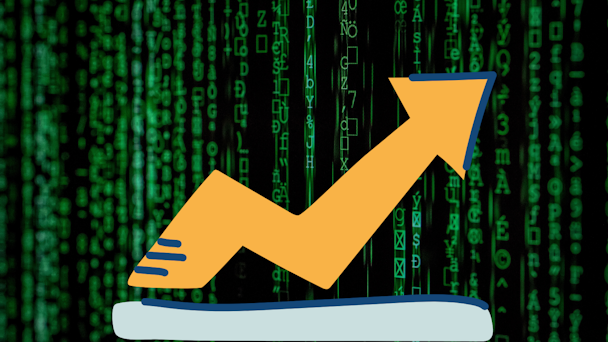Future of Media: 3D OOH's potential, rethinking attention, and Data Deep Dive
Welcome to The Drum’s Future of Media briefing. Media editor John McCarthy brings you some relevant highlights from The Drum and beyond. You land in the middle of our Data Deep Dive, so let me catch you up on what we've unearthed so far. But first, check out our favorite 3D billboard ads.

Future of Media: 3D OOH's potential, rethinking attention, and Data Deep Dive
Larger than life OOH
Amplify’s executive creative director Alex Wilson tells us that anamorphic 3D billboard ads “blur the lines between content, OOH and experiential like never before”.
Many people are getting lost up their own backsides talking about what ‘metaverse’ entails, but I think it’s easier to bring experiences into the real world than bringing people into the experience. I predict that 3D OOH will be considered by all the biggest entertainment IPs. I’ve never seen ideas come to life so convincingly before.
Highlights from our Data Deep Dive
Attention metrics are important now that multi-touch attribution appears to be flushed. We’re all still trying to agree what ‘attention’ actually is in digital advertising.
For Rob Hall, chief executive officer of Playground XYZ, it’s the length of time an ad is “looked” at. That seems obvious, but such a generous definition is uncommon. In the piece we learned that the most actionable data is actually gathered from the consumer, not simulated, but it’s getting harder to collect. And prediction models will improve. We’ll see some sway here. Michelle Hobbs, APAC lead for PlatformGSK at Publicis Media, predicts that 2022 will be the year that attention metrics move from “research topic to a credible media currency”.
Data bases
The top networks claim to be taking unique approaches to their data businesses. They have rolled the dice on the strategies they think will win tomorrow. Sam Bradley’s done a good job explaining their USPs. The jargon’s quite unintelligible at times whenever you get a marketer talking about databases and the cloud.
Dentsu International’s global chief executive Wendy Clark wins my brevity award for saying “we‘re going to know people better than anyone else” when discussing Merkle. The rest are a bit less concise for my money. They’re all here.
Whoever gains a lead in chugging through huge data fields to unearth actionable insights will allegedly have a distinct competitive advantage. But how many of the best ideas are born from a spreadsheet? Sit tight, we’ll find out.
Closer to the customer
Underpinning much of the aforementioned data businesses will be first-person data, but it’s worth also considering the value of zero-person data - data that “a customer intentionally and proactively shares with a brand”. This could be to receive better recommendations or content, or in exchange for points/rewards. It has implications in advertising.
With GDPR raising discussions of consent in advertising, maybe it’s time that the audiences being targeted simply tell us their interests rather than having marketers infer them? The question is, what’s a more accurate reflection of a person – who they think and say they are, or our best guess after trying to track the things they look at and do on the internet?
We might be overthinking things. People tend to accept cookies… even if they have concerns about how the data will be used. It’s a war of fatigue and perhaps hints that current consent forms aren’t quite fit for purpose.
Fraud squad
It’s worth remembering that ad fraud exists. It’s a constant and is often ignored as a result. Volumes vary but several studies place it at between 8% and 30% of global digital ad spend. Even 8% is too high. If 8% of this briefing’s audience turned out to be bots I’d be distraught (or ask them to invite some more botnets).
Dan Lowden, chief marketing officer at Human, reminds us that these schemes are “well-funded, act like real companies, have health care, offer vacation days and pay well”. This isn’t click-farms, it’s sophisticated. Just look at the recent case of the Russian ‘Ad Fraud King’. That’s an immediate $7m stolen from the media ecosystem that could have funded a few journalists, content creators, or into an exec’s bonus pot (more likely).
Fraud follows the money too. Numerous schemes have been unearthed in CTV around, believe it or not, premium inventory, where the bottom-line is higher. Cross-industry cooperation and direct buying are just some ways to erode fraud risk.
Another study this week from Integral Ad Science (IAS) outlined that agencies and brands can’t even agree on who should be policing media quality. And that brands themselves were much more relaxed about brand safety in programmatic. Perhaps it’s not so important who’s doing this work… as long as someone is.
More stuff
-
Channel 4 ad rallies ‘big, beautiful weirdos’ to underline diversity commitment
-
Amazon Prime Video debuts smiling hyena Christmas ad to stand apart from Amazon
-
PIPL: what you need to know about China’s personal information protection law
-
How B2B CMOs can use first-party data to drive business growth in 2022
Read the last Future of Media briefing.
Subscribe to our other briefings. Please share with curious friends or ignorant colleagues... and don’t hesitate to contact me on Twitter, Linkedin and email

